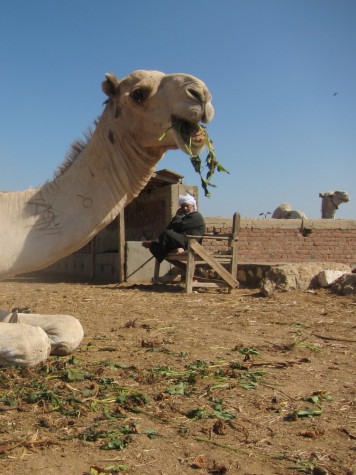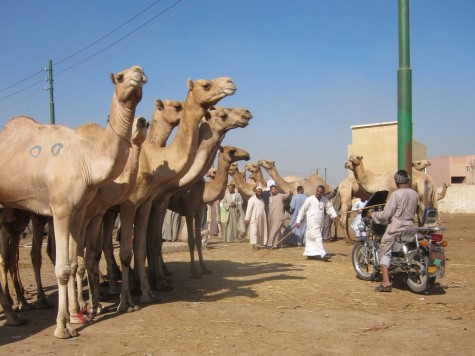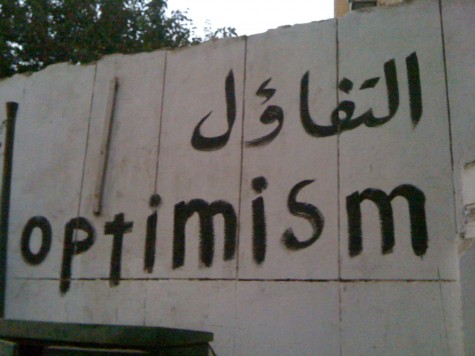It’s hard to talk about Egypt without mentioning all the political business, of course, but being there was a great reminder of how life goes on, and pretty magnificently. A country can be going through its largest upheaval in 50 years, but people still go to work, shop for vegetables, smoke a sheesha… Traveling there was 95 percent normal.
I did happen to leave just a few days before the November 18 protests got ugly. But I did also happen to be there on October 19, when the military killed 19 Copts. For better or worse, life went on the next morning. Cairo is a very big place.
In no particular order, here’s what caught my eye in Cairo:
Cairo has tuktuks now. Actually, only Giza has tuktuks. They got banned from the east side of the river because it just made the traffic too insane. Small towns have tuktuks too. The vehicles are actually imported from Thailand. Here’s our driver in Wadi Natrun:
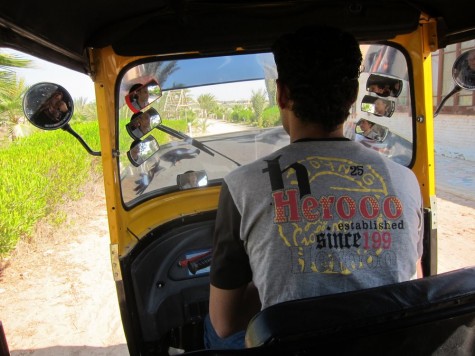
The best tuktuks have huge sound systems, and our driver was blasting who I later found out was DJ Amr 7a7a (say it ‘Haha’), this tune that I heard many times over the rest of my trip. Sorry–can’t find version with words and his magnificent use of AutoTune. Just imagine 13-year-olds doing gangly dances to that tight bass line in a dusty small-town road, and you’ll get an idea how bad-ass we were rolling in our tuktuk.
Speaking of drivers: Cairo taxis (most of them) have meters. I still am marveling about how the simple addition of meters has transformed Cairo cabbies from some of the worst in the world to some of the best. Now that neither front seat nor back seat has to stress out about the fare, Cairo drivers can turn on their full charm. (Oh, except that one who showed a woman I met pornographic photos on his cell phone. And the one who pulled out a gun–!!!–from under his seat and showed it off to a guy in my class. And the one who, far less nefariously, drove me through the Al-Azhar tunnel for no good reason at all. But all the rest of them are true gentlemen.)
Egypt has a lot of Mubarak to get rid of. Here in Mansoura, he’s been painted out of a mosaic:

In the Cairo metro, Mubarak station (the one at Midan Ramses) has been hastily changed to Al Shohadaa — ‘Martyrs’ — or just blacked out.

In Cairo, it seemed like there were a lot more young women out on the street, especially noticeable at night. Though at night I wouldn’t have been able to capture this great look:
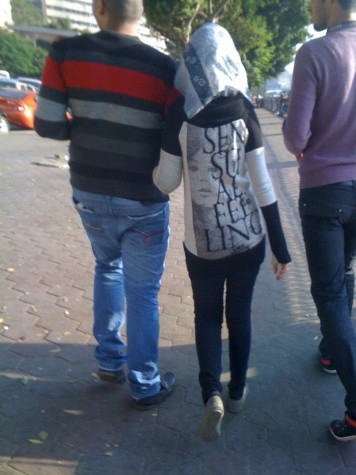
Color seems to be used a little more liberally on buildings. At least more than I remember, but in my memory, Cairo is always solid brown. I wonder if we might have the Chinese to thank for the colored paint–I noticed all of it was from there. People rarely have control enough to paint a whole building, but they’ll often paint their balcony a bright color, so it pops out from the rest of the brown building. This isn’t paint, but it gives you an idea of the effect:
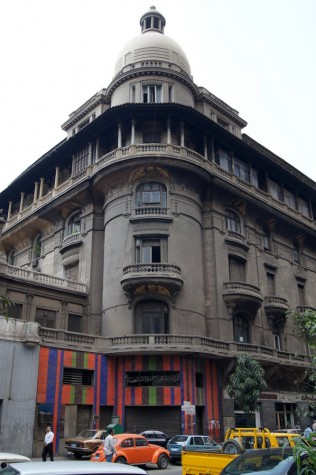
In Islamic Cairo, the stretch of medieval buildings known as Bein al-Qasrein is done with restoration, and it looks beautiful. I was worried it would be too tidy, too fake. But it has aged well, and most important, people seem to hang out here in a way they didn’t before–it’s more of a public space than a thoroughfare. Here’s the inside of one of the buildings:

Elegant, calm, restorative. This is the side of Cairo that’s there, but hard to see–you have to go looking for it, and you certainly won’t read about it in the newspaper.

